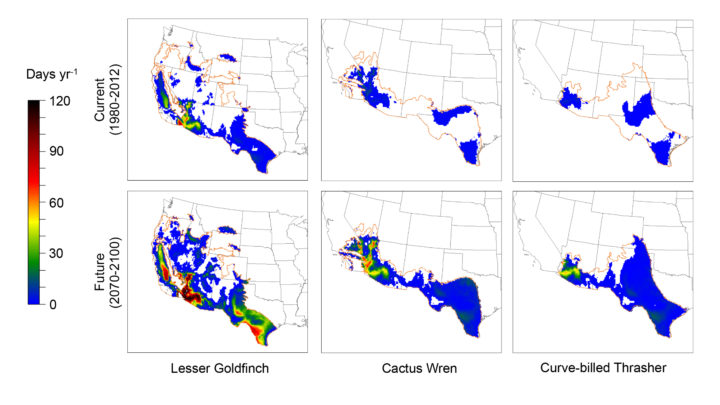Here’s a roundup of some of the latest Earth science news from NASA.

The number of days with lethal dehydration risk rises in a future scenario where the Earth warms by 7 degrees Fahrenheit. Credit: NASA
MORE HEAT, LESS SINGING
Longer, more intense, and more frequent heatwaves threaten U.S. songbirds, according to a recent study. In a scenario where temperatures increase by 4 degrees Celsius (7 degrees Fahrenheit), five species of songbirds will become more prone to mass die-offs due to dehydration. Researchers used data from the North American Land Data Assimilation System (NLDAS) and physiological data in the study. Read more here.
CHILLING AND DRILLING UNDER EREBUS
This spring, scientists descended into ice caves below Mount Erebus—the entrance to the underworld, according to the ancient Greeks. Aaron Curtis, a postdoctoral scholar at NASA’s Jet Propulsion Laboratory, used the icy environment to test robots, a drill, and computer-aided mapping technology. The tests were intended to explore and simulate how these tools might perform on icy planets. Read more here.
SAGE WATCHES OVER OZONE
How thick is the Earth’s ozone layer now, after years of depletion, regulation, and recovery? The Stratospheric Aerosol and Gas Experiment (SAGE) III instrument is set to monitor “the Earth’s sunscreen,” as well as other gases and particles, from the International Space Station. Following its installation in March 2017, SAGE will keep a pulse on ozone, water vapor, and aerosols in our atmosphere.



